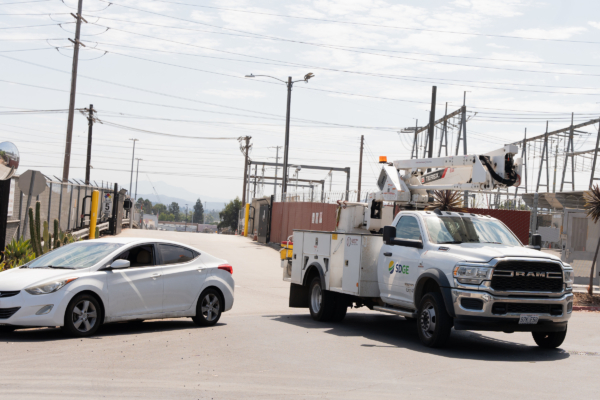Last week, following a fire incident at a lithium battery storage facility, the San Diego County Board of Supervisors passed new regulations to strengthen oversight of battery storage facilities. However, due to concerns about impacting the goals of achieving green energy and climate plans, the Board did not halt the construction of new battery storage facilities.
On September 5th, a fire broke out at the lithium battery storage facility located in Escondido, Northern San Diego County, owned by San Diego Gas & Electric (SDG&E). The fire in one of the storage units led to mandatory evacuations, causing nearby businesses to close and schools to suspend classes.
The facility, owned by SDG&E, consists of 24 storage units, with only one unit catching fire.
Tyler Batson, a supervisor at the Escondido Fire Department, explained that each storage unit is roughly the size of a camper and contains multiple shelves neatly lined with boxes of lithium batteries.
Batson described the firefighting strategy for lithium batteries as allowing them to burn out on their own, with each unit estimated to take 1-2 days to burn completely.
Surrounding battery units were kept cool to prevent overheating and combustion. Firefighters used large water hoses to surround neighboring storage units to maintain lower temperatures.
Batson explained that burning lithium batteries produce toxic substances which, fortunately, quickly dissipate into the atmosphere as they are light.
As a precaution, businesses and schools around the battery storage facility were evacuated and closed on the day of the incident and the following day.
Battery Energy Storage Systems (BESS) are part of the initiative to achieve green energy goals, designed to store excess renewable energy like solar or wind power for future use.
As green energy projects progress, more battery storage facilities are under construction or in the application process. Another large battery storage project named Seguro in Escondido is currently in the works, not far from the site of the SDG&E fire incident.
In May of this year, a large battery storage facility in Otay Mesa, Southern San Diego County, caught fire and burned for 17 days. Last September, a similar fire incident occurred at a storage facility in Valley Center, Northern San Diego County.
With the increasing frequency of battery fire incidents, the risks and hazards associated have raised concerns, particularly in plans to construct battery storage facilities near residential areas, facing resistance.
During a San Diego County Board of Supervisors meeting on September 11th, the Board passed regulations to enhance the management and approval process for battery storage facilities in the unincorporated areas of San Diego County with a 4-1 vote. However, the Board did not suspend new facility constructions as some opponents had hoped.
Supporters argue that without battery storage facilities, the county may struggle to achieve its climate goals.
Vice Chair Terra Lawson-Remer stated in a release that battery storage infrastructure “is necessary for us to achieve our climate goals.”
She emphasized the need for these facilities to comply with enhanced safety measures, ensuring that their selection and construction methods protect residents’ health and safety.
Chair Nora Vargas remarked that while public safety is crucial, battery storage facilities are vital for renewable energy and pausing such projects may not be the best approach.
Supervisor Joel Anderson noted in a statement that as an elected official representing communities facing extreme wildfire risks, prioritizing the highest national safety standards in the Board’s future actions is crucial to safeguard residents.
Supervisor Jim Desmond was the sole dissenter, stating that he couldn’t support any related policies if the construction of non-compliant battery storage facilities wasn’t paused.
In public comments before the Board’s vote, many residents expressed their desire to halt the construction of battery storage facilities.
Stephani Baxter, a member of the Fallbrook Community Planning Group, highlighted concerns about two battery storage projects in their community, one of which is near a watershed. She raised issues of noise disturbances, light pollution, and declining property values associated with these projects.
She questioned, “If this is truly about environmental protection and sustainable development, where are the environmental advocacy groups on this precious watershed?”
Opponents of halting battery facility constructions argued that a pause would lead to job losses and harm the county’s overall climate action goals. Climate action policy advocate Serena Pelka noted that battery storage facilities help prevent summer blackouts in the county.

